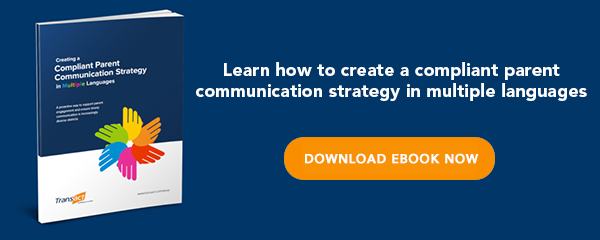Immigration is changing education in the United States. Public school districts are seeing increased enrollments of English Second Language (ESL) students, and the upward trend is expected to continue. As these trends have shifted, so too has the federal government’s role, with mandates that make school districts responsible for providing the best educational services possible to one and all.
Read MoreDr. David Holbrook

Recent Posts
District Obligations to ESL Students
Vulnerable students receive increased attention in recent ESSA guidance
The reauthorization of the Elementary and Secondary Education Act (ESEA) by the Every Student Succeeds Act (ESSA) made some significant changes and additions to requirements related to children in foster care. On June 23rd, the U.S. Department of Education (USED) issued the document “Non-Regulatory Guidance: Ensuring Educational Stability for Children in Foster Care”, which provides clarification for the new or changed requirements.
Read MoreHomeless student guidance - changes required for October 1st
On July 27th 2016, the U.S. Department of Education (USED) issued updated guidance for the McKinney-Vento Homeless Assistance Act as amended by the Every Student Succeeds Act (ESSA). This guidance also covers the ESSA Title I requirements for students experiencing homelessness, with implementation requirements as soon as October 1, 2016.
Read MoreEducation Rights of Recently Arrived Unaccompanied Immigrant Children and Youth
There is growing concern surrounding a recent influx of children from Central America who have illegally crossed the U.S. – Mexico border. Over a period of about 10 months, ending mid-August 2014, more than 55,000 unaccompanied children had crossed the border and were referred to the U.S. Department of Health and Human Services (HHS). That’s more than double the number of such children that were apprehended for all of 2013. Under U.S. law, the HHS is required to care for unaccompanied children that cross the border into the U.S.. These children are typically placed in an HHS shelter, where they are not enrolled in public schools, but are provided educational services by the HHS shelter providers. Later, they may be released to an appropriate sponsor, usually a parent, relative, or family friend. While residing with their sponsor, these children are eligible to enroll and receive educational services though the public school system.
Read MoreTitle III: Supplement Not Supplant Monitoring Issues
The Title I Monitor from March 2014 (Vol. 19, No.3), a publication of LRP, carried an article related to recent Title III monitoring findings. The LRP article looked at the five most recent Title III Monitoring reports posted on the USED’s site. Many of the issues cited in this article are the same issues that I saw over the two and a half years I contracted with the US Department of Education (USED) to help monitor state’s Title III programs (visiting five states). In particular, the supplement not supplant issues related teacher salaries and translation/interpretation, were some of the most common findings by Title III at USED.
Read MorePOSTS BY TOPIC
- ESSA (107)
- Parent Engagement (69)
- EL (59)
- Civil Rights (43)
- USED (19)
- KPI (15)
- Operations Performance (12)
- McKinney-Vento (10)
- charter schools (5)
- compliance software (5)
- homelessness (4)
- ARP (3)
- American Rescue Plan (3)
- CARES Act (3)
- CRRSA (3)
- Corporate/Product News (3)
- ESSER (3)
- Education (3)
- HIMSS (3)
- Native American Education (3)
- Student Support (3)
- Transportation (3)
- After School Programs (2)
- CGCS (2)
- COVID (2)
- CRRSA Act (2)
- Charter School Governance Platform (2)
- Charter School Leaders (2)
- OST (2)
- School Communication Plan (2)
- Student Success (2)
- 21CCLC (1)
- AI (1)
- Artificial Intelligence (1)
- Board Meetings (1)
- Cloud Technologies (1)
- DACA (1)
- Data Compliance (1)
- Release Notes (1)
- Routing (1)
- charter board ceo (1)
- charter school staff (1)



